Nestled in the hills surrounding Lake Victoria, farmers living in Homa Bay, Kenya enjoy breathtaking views of their countryside during and after the rainy season. The lake glistens on the horizon and rolling green hills create a striking contrast to the farms below.
But the dry season looks much different.
“If you come here when it is dry, you would not believe it. You would not see these fields like this,” says farmer Obuya (pictured below). “The weather is unpredictable. It may rain this season, next season it is dry. But mostly it is dry.”
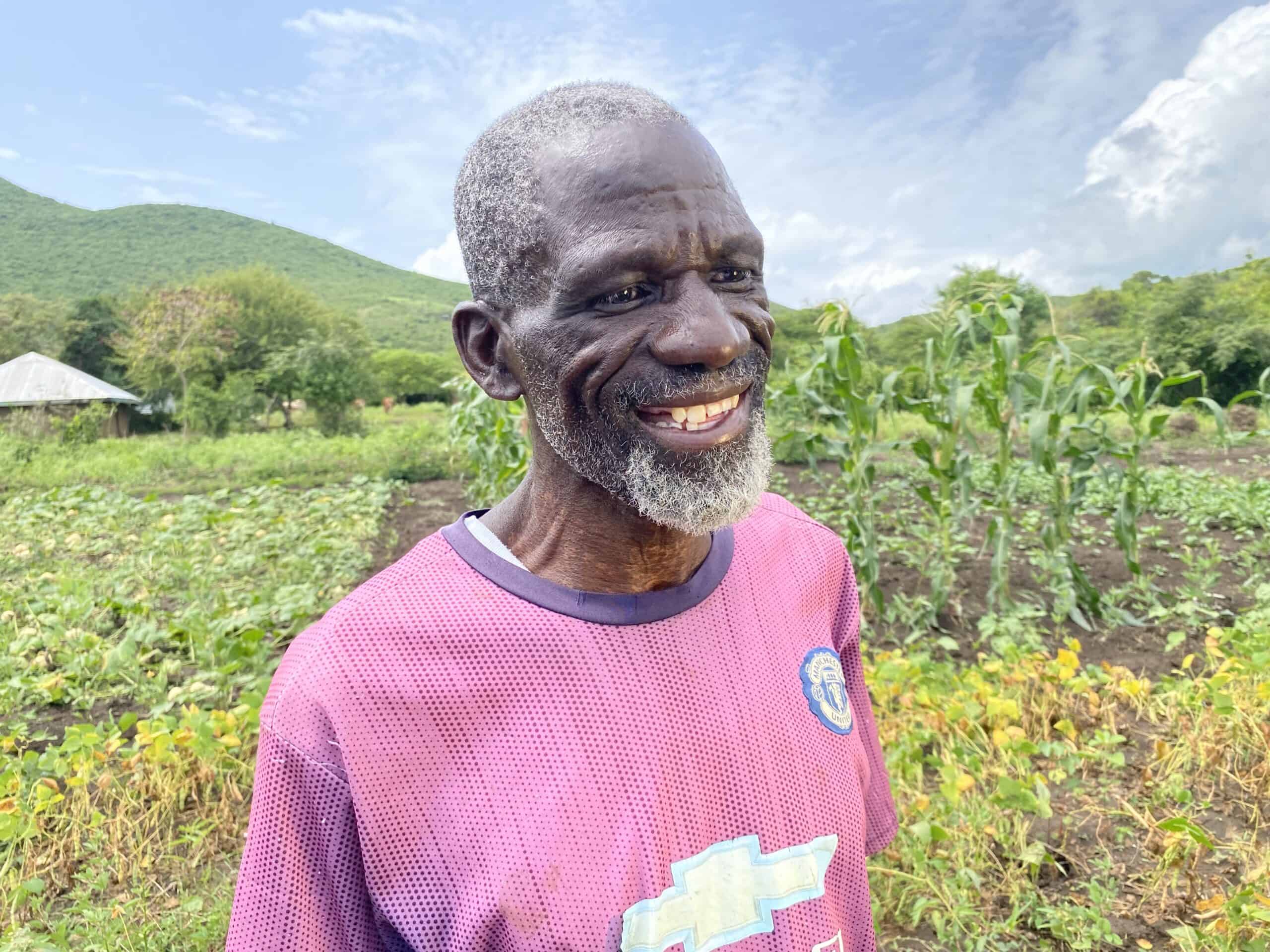
Climate change is shifting weather patterns around the globe. Regions closer to the equator (like Homa Bay) feel these changes more dramatically.
A few farms and a short walk away from Obuya, Mary Ndanzu has been hit hard by the persistent dry periods in recent years. Her cattle died and nearly everything she planted would fail – all due to prolonged heat and little to no rainfall.
“This land before was unproductive, but now you can see it is very productive,” Mary says (pictured below).
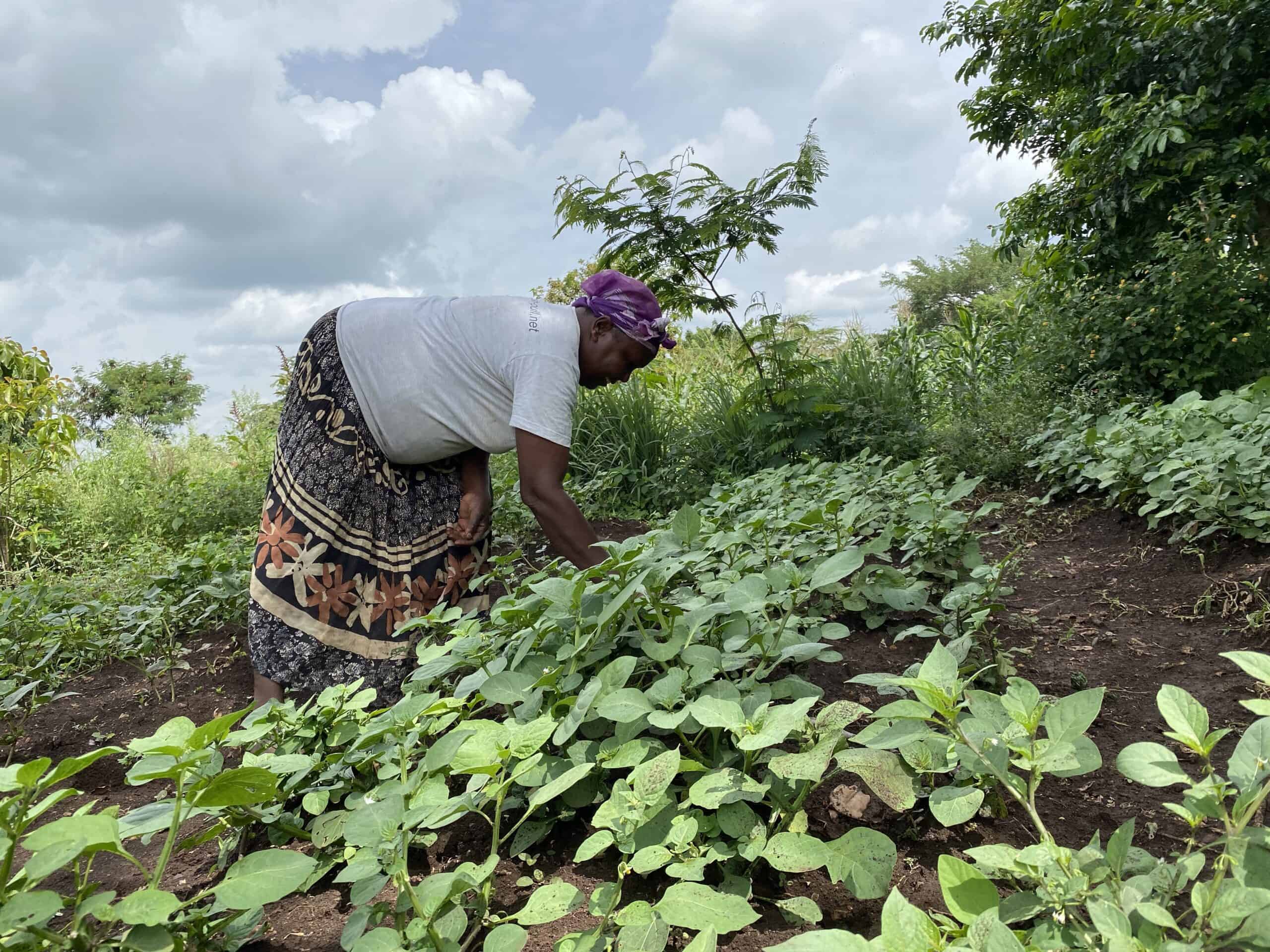
The Forest Garden Approach
The difference? The Forest Garden Approach.
Mary and Obuya are part of a larger group of farmers in the region who signed up for a training program with Trees for the Future (TREES) in early 2021. Over the last two years, local TREES staff have introduced the farmers to a sustainable farming technique called the Forest Garden Approach. Farmers plant thousands of trees on their property, protecting and restoring the dry, degraded landscape. At the same time, they’re growing a wider variety of food and resource crops so that they have more to rely on throughout the year.
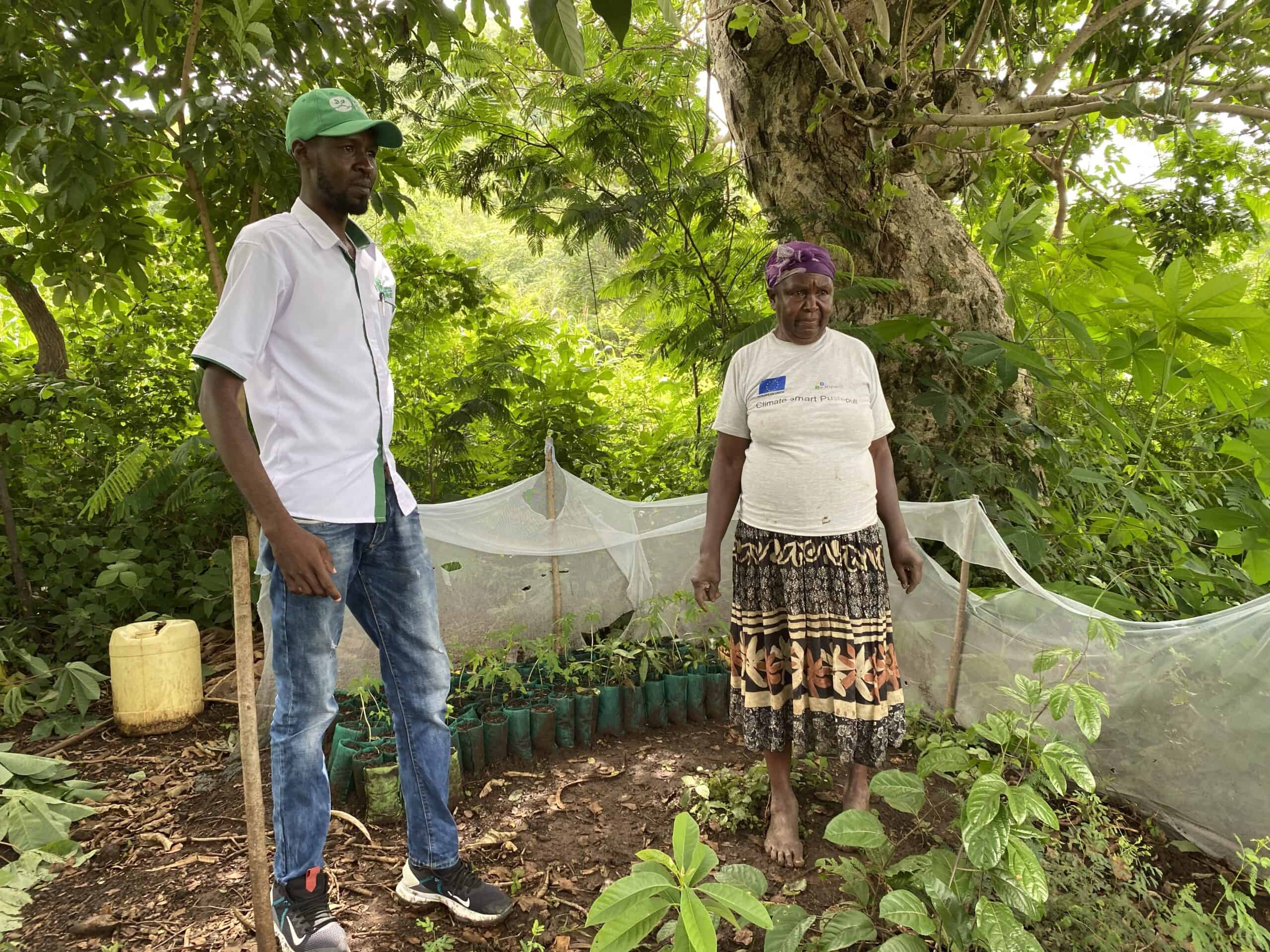
Lead Technician Carlos Odour meets with Mary in her Forest Garden.
“I’ve planted a big Forest Garden. It is almost two and a half acres. I’ve already planted over 7,200 seedlings within this Forest Garden’s living fence,” shares Mary. “I have different varieties of crops, spinach, giant nightshade, spider plants, and amaranth. I’m very happy about Trees for the Future.”
The farmers care for the trees from seed, managing their seedlings in nurseries so that they’re able to use limited water effectively. Once the trees are planted in the Forest Garden, the farmers continue to care for them as they acclimate. As the trees become established and their roots can make their way to water sources underground, the farm turns into a naturally regulated ecosystem. Temperatures drop inside a Forest Garden and the soil can more easily retain moisture – making it easier for valuable food and resource crops to thrive year-round and through challenging conditions like extreme heat and drought.
“I believe the trees will protect me from these challenges in the future,” Obuya says. At last count, he had planted over 5,000 trees in his Forest Garden.
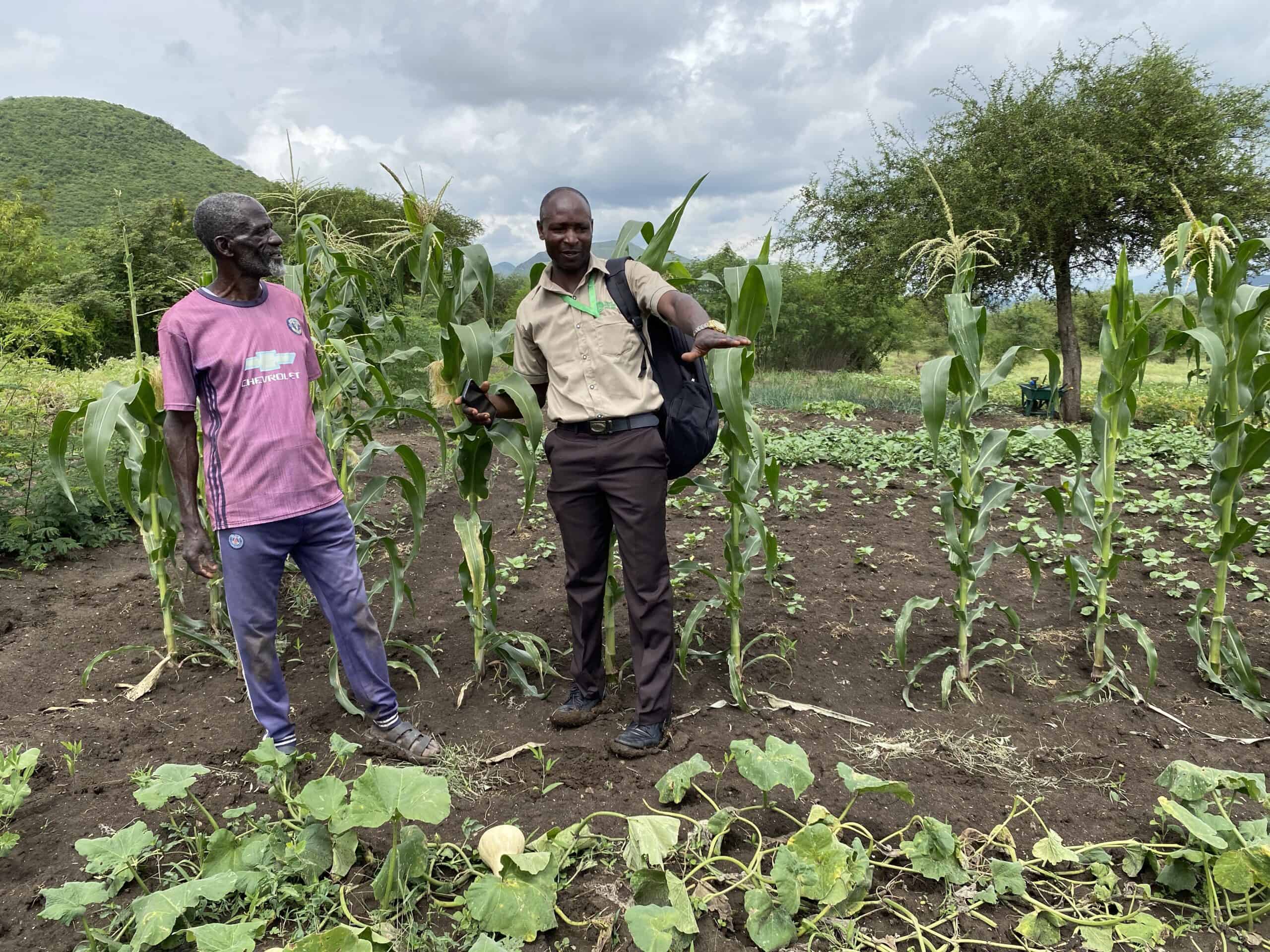
TREES Assistant Technician George Ochieng (right) visits with Obuya at his Homa Bay farm. Obuya has planted more than 5,000 trees since joining the Forest Garden training program.
Forest Garden farmers are also no longer reliant on expensive chemical fertilizers that harm the soil and biodiversity. Instead, they make and use their own compost.
“I’ve been using my compost to plant all these crops and I’ve harvested good yields,” says Mary, gesturing to dozens of healthy vegetable beds.
Increased Income & Nutrition
As their farms improve, so do farmers’ lives.
While many of their neighbors grow just one or two cereal crops, Forest Garden farmers grow dozens of food and resource crops.
“After training on diversification, my family is very healthy, because they are eating different varieties of foods from the Forest Garden,” Mary says.
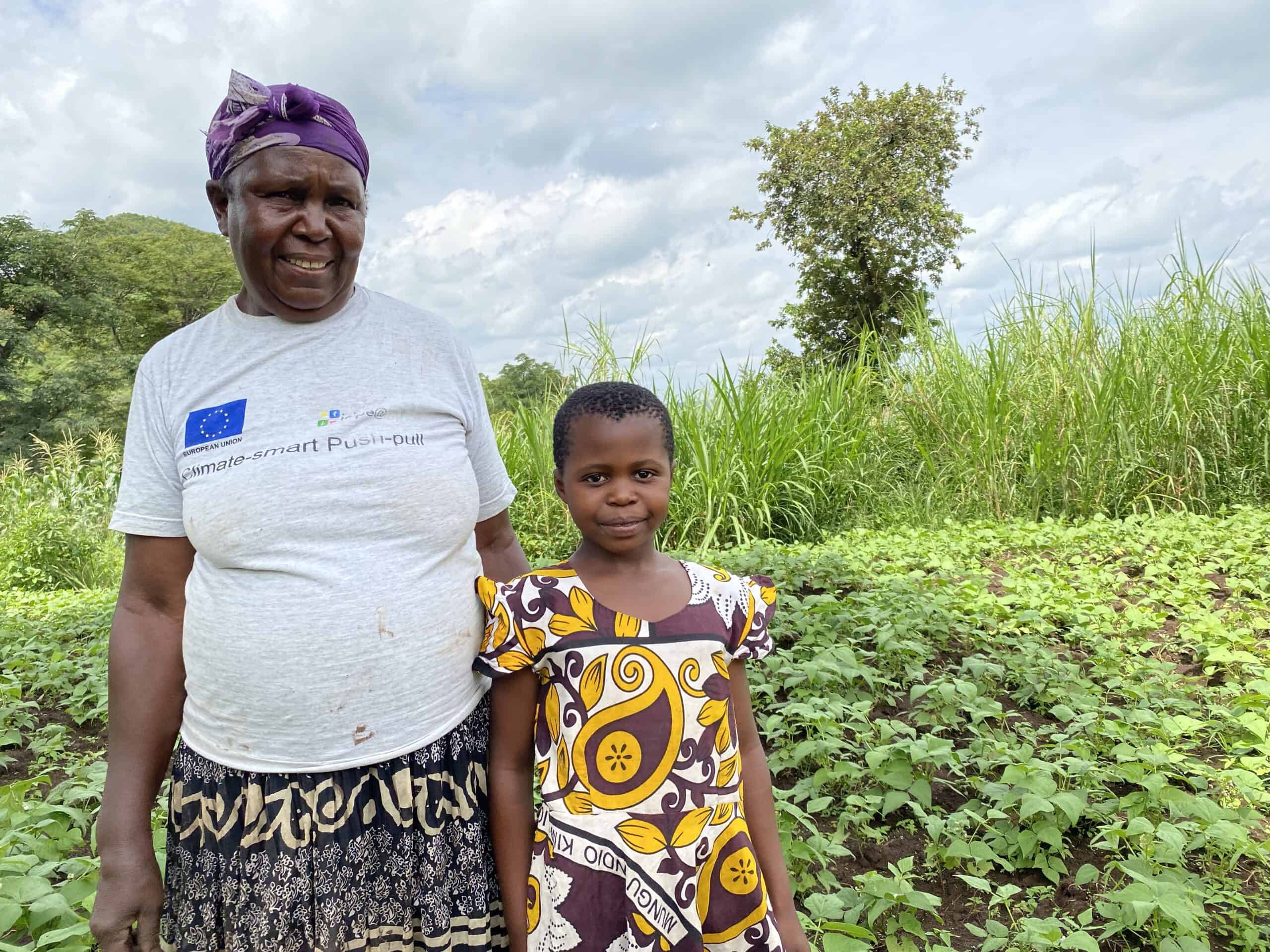
Mary’s family depends on her. Thanks to her Forest Garden, she is providing more nutritious food than ever before.
In fact, farmers in the program exceed the global target for food security by year two of the four-year training program.
“It is different now because I can now get vegetables from right inside my farm. If I want to eat a vegetable I can pick it right here,” Obuya says.
And because farmers can get what they need on their own land, they are spending less money elsewhere. Obuya used to have to go to the market to buy food for his family, spending what little money he had. Today, they get everything they need from the Forest Garden.
“Right now, I’m not buying, so I am saving some money and that is changing my life,” Obuya says.
“I’m harvesting the vegetables and taking them to market. I don’t have to go buy vegetables at the market, so I am saving a lot of money,” explains neighboring farmer Rose Akiny.
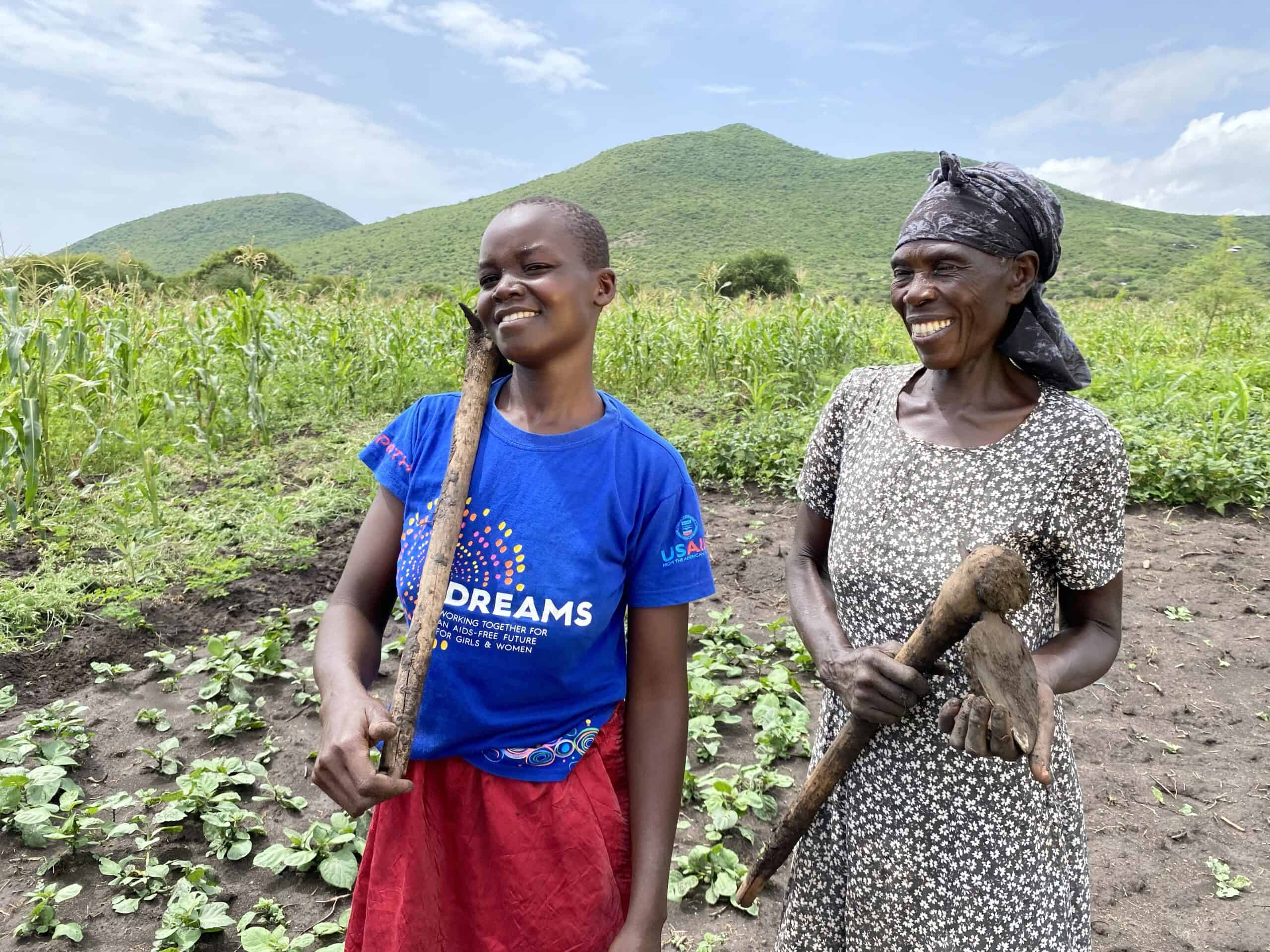
Rose is able to send her kids to school with her increased income. When she’s not at school, her daughter Beryl (left) helps in the Forest Garden.
The increased earnings have allowed her to send her kids to school.
Carbon as a Crop
In addition to their food and resource crops, the farmers are looking forward to benefiting from yet another income opportunity in their Forest Gardens: carbon.
With each tree they plant and nurture to maturity, the farmers are capturing and storing carbon. In 2023, TREES announced their first carbon project, bringing 15,000 Kenyan farmers (including Obuya, Mary, and Rose) into the carbon market.
Now, farmers can add carbon to the list of the many marketable crops they rely on to support their families.
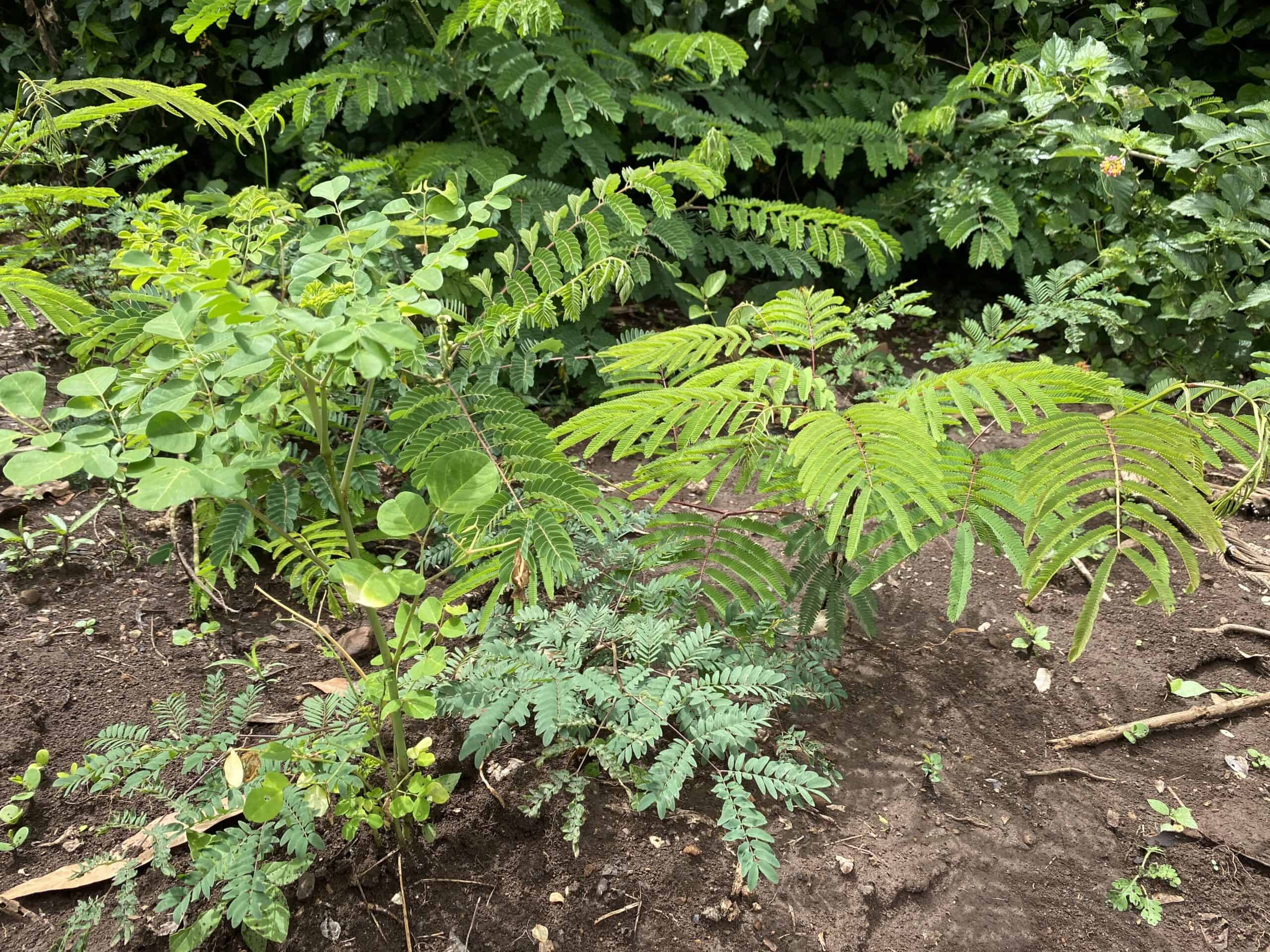
Common agroforestry trees in Kenyan Forest Gardens are moringa, calliandra, and leuceana.
Long-Lasting Change
Often, having experienced the lifechanging benefits of the Forest Garden Approach, farmers will establish additional Forest Gardens on their property after their training with TREES.
“I think if we do this on a larger scale, my life will change completely,” says Obuya.
Obuya, Mary, and Rose will graduate from TREES’ Forest Garden training program in 2025, but their Forest Gardens will continue growing and supporting them and their families for generations.
“I’m really enjoying my Forest Garden and I am very happy,” Rose says smiling.
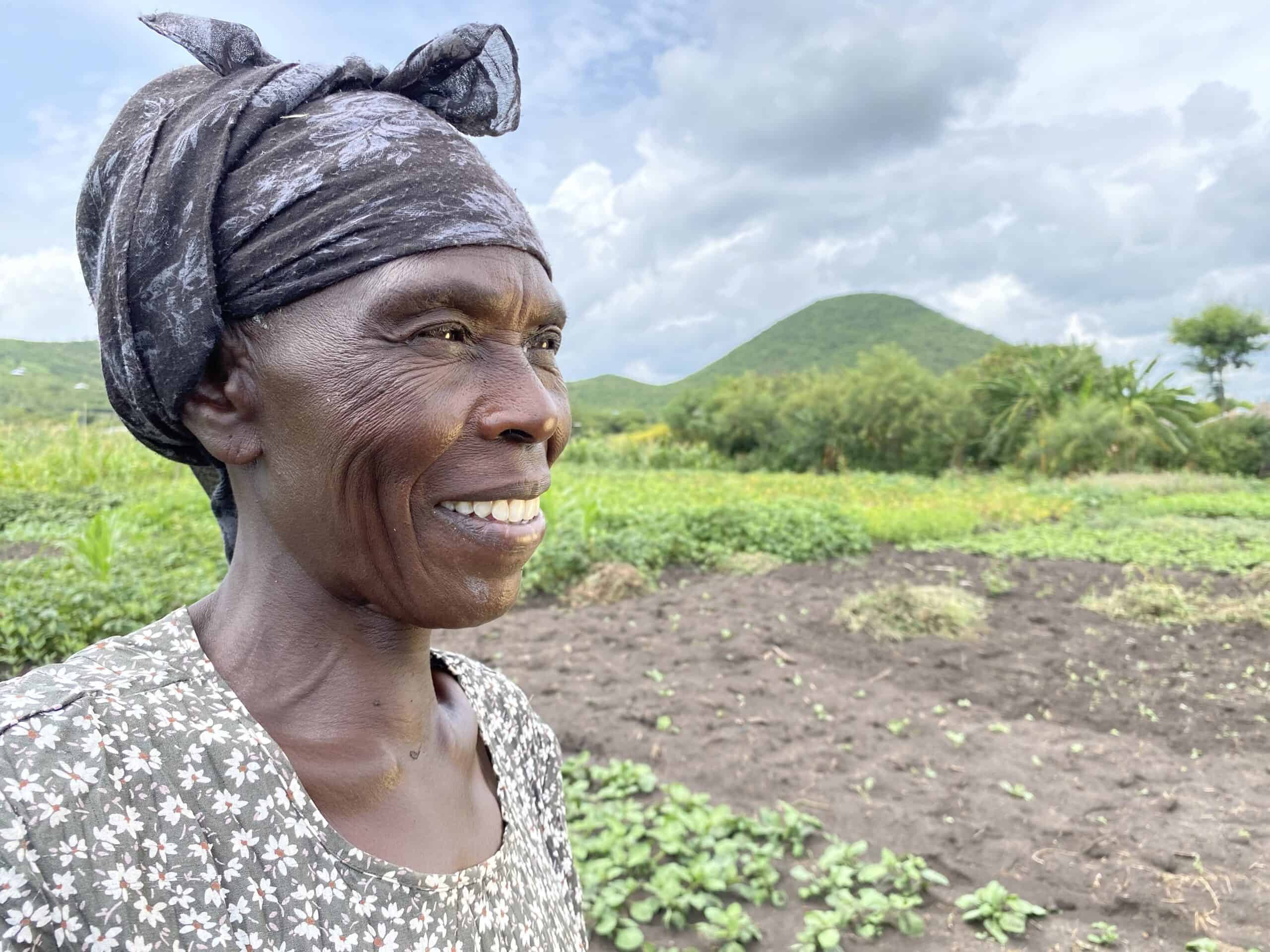
Help TREES staff reach more farmers in western Kenya and across sub-Saharan Africa. Donate today.